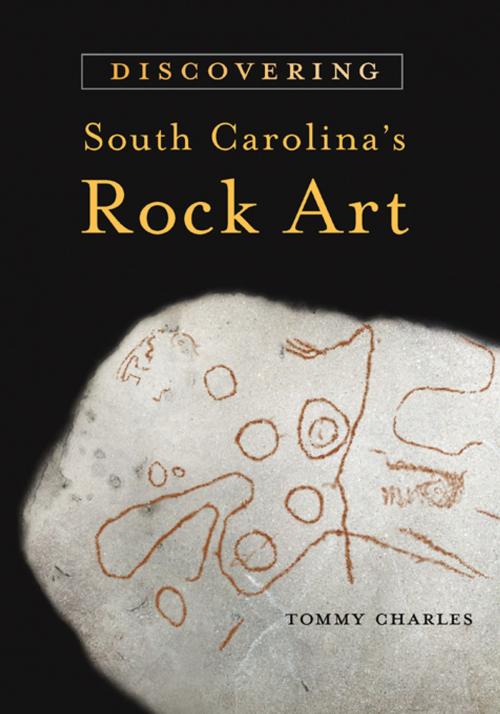Discovering South Carolina's Rock Art
Nonfiction, Social & Cultural Studies, Social Science, Archaeology| Author: | Tommy Charles | ISBN: | 9781611172126 |
| Publisher: | University of South Carolina Press | Publication: | August 31, 2012 |
| Imprint: | University of South Carolina Press | Language: | English |
| Author: | Tommy Charles |
| ISBN: | 9781611172126 |
| Publisher: | University of South Carolina Press |
| Publication: | August 31, 2012 |
| Imprint: | University of South Carolina Press |
| Language: | English |
For years Tommy Charles scoured South Carolina's upcountry for examples of ancient rock art carvings and paintings, efforts conducted on behalf of the South Carolina Institute of Archaeology and Anthropology (SCIAA). As SCIAA's collections coordinator, Charles amassed considerable field experience in both prehistoric and historic archaeology and had firsthand involvement in cataloging sixty-four sites of South Carolina rock art. Charles chronicles his adventures in exploration and preservation in Discovering South Carolina's Rock Art. Although Native American rock art is common in the western United States and even at many sites east of the Mississippi, it was believed to be almost nonexistent in South Carolina until the 1980s, when several randomly discovered petroglyphs were reported in the upstate. These discoveries set in motion the first organized endeavor to identify and document these ancient examples of human expression in South Carolina. Over the ensuing years, and assisted by a host of volunteers and avocational collectors, Charles scoured the Piedmont and mountains of South Carolina in search of additional rock art. Frustrated by the inability to find these elusive artifacts, many of which are eroded almost beyond visibility, Charles began employing methods still considered unorthodox by current scientific standards for archaeological research to assist with his search and documentation. Survey efforts led to the discovery of rock art created by Native Americans and Europeans. Of particular interest are the many circle-and-line petroglyphs the survey found in South Carolina. Seeking a reason for this repetitive symbol, Charles's investigation into these finds led to the discovery that similar motifs had been identified along the Appalachian Mountains from Alabama to New York, as well as in the American Southwest and Western Europe. This engrossing account of the search for South Carolina's rock art brings awareness to the precarious state of these artifacts, threatened not only by natural attrition but also by human activities. Charles argues that, if left unprotected, rock art is ultimately doomed to exist only in our historical records.
For years Tommy Charles scoured South Carolina's upcountry for examples of ancient rock art carvings and paintings, efforts conducted on behalf of the South Carolina Institute of Archaeology and Anthropology (SCIAA). As SCIAA's collections coordinator, Charles amassed considerable field experience in both prehistoric and historic archaeology and had firsthand involvement in cataloging sixty-four sites of South Carolina rock art. Charles chronicles his adventures in exploration and preservation in Discovering South Carolina's Rock Art. Although Native American rock art is common in the western United States and even at many sites east of the Mississippi, it was believed to be almost nonexistent in South Carolina until the 1980s, when several randomly discovered petroglyphs were reported in the upstate. These discoveries set in motion the first organized endeavor to identify and document these ancient examples of human expression in South Carolina. Over the ensuing years, and assisted by a host of volunteers and avocational collectors, Charles scoured the Piedmont and mountains of South Carolina in search of additional rock art. Frustrated by the inability to find these elusive artifacts, many of which are eroded almost beyond visibility, Charles began employing methods still considered unorthodox by current scientific standards for archaeological research to assist with his search and documentation. Survey efforts led to the discovery of rock art created by Native Americans and Europeans. Of particular interest are the many circle-and-line petroglyphs the survey found in South Carolina. Seeking a reason for this repetitive symbol, Charles's investigation into these finds led to the discovery that similar motifs had been identified along the Appalachian Mountains from Alabama to New York, as well as in the American Southwest and Western Europe. This engrossing account of the search for South Carolina's rock art brings awareness to the precarious state of these artifacts, threatened not only by natural attrition but also by human activities. Charles argues that, if left unprotected, rock art is ultimately doomed to exist only in our historical records.















